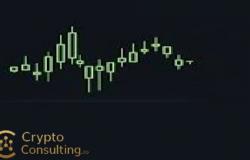
Cryptocurrency trading offers exciting opportunities but requires understanding fundamental concepts before risking capital. This beginner's guide explains essential trading concepts including order types, chart reading basics, market analysis approaches, and risk management strategies. Whether you're day trading or making occasional trades, mastering these fundamentals improves decision-making and helps avoid costly mistakes.
Market orders execute immediately at current market prices. When you place a market order to buy or sell cryptocurrency, exchanges match your order with existing orders on the order book. Market orders guarantee execution but not price. In volatile markets, the executed price may differ significantly from the displayed price when you initiated the order, especially for large orders or less liquid trading pairs.
Limit orders specify the maximum price you'll pay when buying or minimum price you'll accept when selling. Your order only executes if the market reaches your specified price. Limit orders provide price control but don't guarantee execution—if the market never reaches your price, the order remains unfilled. Traders use limit orders to buy dips or sell peaks without constantly monitoring markets.

Stop-loss orders automatically sell your holdings if prices drop to a specified level, limiting potential losses. For example, if you buy Bitcoin at $60,000, you might set a stop-loss at $57,000 to limit potential losses to 5%. When the price hits your stop level, the order triggers and executes as a market order. Stop-losses protect against catastrophic losses when you can't actively monitor positions.
Stop-limit orders combine stop orders and limit orders. When the stop price triggers, a limit order activates rather than a market order. This prevents selling at much lower prices during flash crashes but risks not executing if the market drops quickly through your limit price. Experienced traders use stop-limit orders for more precise exit control while accepting non-execution risk.
Reading cryptocurrency charts requires understanding candlestick patterns. Each candlestick represents price action over a specific timeframe (1 minute, 1 hour, 1 day, etc.). The body shows opening and closing prices, while wicks extend to high and low prices during that period. Green candles indicate price increases, red candles show decreases. Candlestick patterns like doji, hammer, and engulfing patterns signal potential trend reversals.
Chart timeframes dramatically affect trading strategies. Day traders focus on 1-minute to 15-minute charts for short-term opportunities. Swing traders examine 4-hour to daily charts for multi-day positions. Long-term investors analyze weekly and monthly charts for macro trends. Beginners should start with longer timeframes to reduce noise and emotion-driven decisions.
Technical analysis uses historical price data and indicators to predict future movements. Common indicators include Moving Averages (showing average prices over time), RSI (Relative Strength Index, indicating overbought or oversold conditions), MACD (Moving Average Convergence Divergence, revealing momentum changes), and volume (confirming trend strength). No indicator is perfect—combine multiple signals for better decisions.
Support and resistance levels represent price points where buying or selling pressure historically prevents further movement. Support acts as a floor where buying interest prevents further declines. Resistance acts as a ceiling where selling pressure prevents additional gains. When prices break through support, it often becomes new resistance, and broken resistance often becomes new support.
Fundamental analysis examines factors beyond price charts including project development activity, adoption metrics, regulatory news, macroeconomic conditions, and technological upgrades. Strong fundamentals support long-term price appreciation even when technical indicators signal short-term weakness. Combining fundamental and technical analysis provides comprehensive market understanding.
Risk management is crucial for long-term trading success. Never invest more than you can afford to lose. Limit position sizes to 1-5% of your total portfolio per trade. Use stop-losses on every position to prevent catastrophic losses. Diversify across multiple assets rather than concentrating in one cryptocurrency. Accept that losses are inevitable and focus on overall profitability across many trades.
Position sizing determines how much capital to allocate to each trade. The 1% rule suggests risking no more than 1% of your trading capital on any single trade. If you have $10,000, risk only $100 per trade. Calculate position size by determining your stop-loss distance and dividing your risk amount by that distance. This disciplined approach prevents account-destroying losses from inevitable losing trades.
Common beginner mistakes include overleveraging positions, trading without stop-losses, revenge trading after losses, following social media hype without research, overtrading and racking up fees, letting emotions override strategy, and expecting quick profits. Successful trading requires patience, discipline, and realistic expectations. Most professional traders are profitable on only 40-60% of trades but manage risk to ensure overall profitability.
Leverage amplifies both profits and losses. Trading with 10x leverage means a 10% price move results in a 100% gain or complete loss. While leverage can multiply returns, it dramatically increases liquidation risk. Beginners should avoid leverage entirely until they've proven consistent profitability without it. Even experienced traders use leverage cautiously and never risk more than they can afford to lose.
Tax implications affect trading profitability. Most jurisdictions treat cryptocurrency trades as taxable events. Each trade generates taxable gains or losses that must be reported. Frequent trading creates tax reporting complexity and potentially higher tax rates on short-term gains. Keep detailed records of all trades including dates, amounts, and prices. Consider consulting tax professionals familiar with cryptocurrency taxation.
Paper trading allows practicing strategies without risking real money. Many exchanges offer demo accounts with virtual funds for testing strategies. Spend at least a few months paper trading before committing real capital. Track your performance, identify weaknesses, and refine your approach. Remember that emotions differ when real money is involved, but paper trading builds essential skills.
Successful trading requires continuous learning. Markets evolve constantly with new patterns, technologies, and opportunities. Join trading communities, read market analysis, study successful traders' strategies, and review your own trades to identify improvements. Maintain a trading journal documenting every trade, your reasoning, emotions, and outcomes. This practice accelerates learning and helps identify persistent mistakes to correct.





